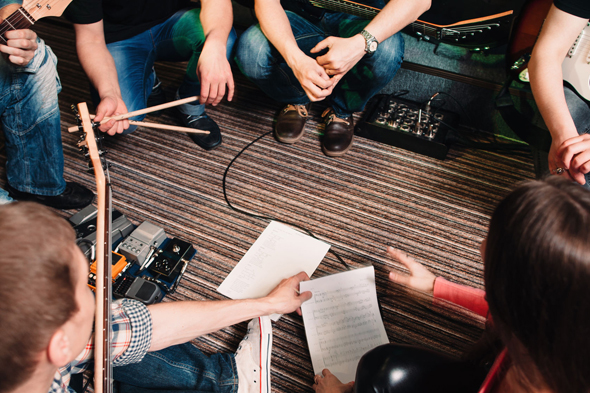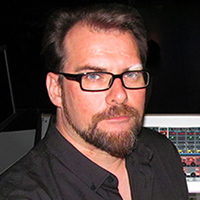For the performing musician there are few things worse than bad sound. If the mix is bad in the PA the audience can’t hear the music, and if it’s bad in the monitors it makes it difficult to play together effectively.
Whatever level artists are at in the music industry, they spend valuable time, effort and money preparing for those precious minutes on stage but all of those efforts can quickly be undone by subpar sound engineering.
It’s no coincidence that an engineer is the first crew member most bands typically hire; having someone out front who knows your songs and cares about your sound makes all the difference. It’s an observable fact that bands who have confidence in the engineer are more relaxed and deliver better performances.
But for those situations where there’s no choice but to work with the house engineer, here are a few tips for getting along with – and thus getting the most from – that engineer.
Stick To The Schedule
The first thing is to be punctual. Turning up on time for sound check with all band members and equipment present ensures getting the maximum time to get sorted, and it also allows the engineer to comfortably deal with you.
Being late automatically increases the amount of work the engineer needs to do while also compressing it into a shorter span of time. It’s a simple matter of professional courtesy; turning up on time can so easily avoid starting the day on the wrong foot.
Sound Check Is Not Rehearsal
Getting a bunch of musicians together to rehearse on a regular basis can be a total nightmare. Finding that one night when everyone is free is frequently an almost impossible task, so the temptation exists to “run through the new stuff at sound check.”
However, it’s important to understand that the primary purpose of sound check is to enable everyone to properly set up and to ensure everyone is comfortable on stage. This involves checking that all of your equipment is present (including those pesky power and signal cables), that it all works, that everyone can physically fit on the stage. and that the amps and monitors are distributed appropriately.
Then it’s just a case of line checking the individual instruments and running through a couple of songs to get the monitor mixes sorted.
The sound check also enables the engineer to get a feel for the music so he/she can start to build the mix. A good engineer will also work with the musicians to ensure the stage levels are suitable such that he/she can add the right mix elements to the ambient sound to produce the desired sound in the house. Therefore musicians should always arrive fully rehearsed and ready to go.
Sound Check Song Selection
It’s always a good idea to think carefully about what songs to play in sound check. Be sure to include every configuration of instruments and vocals to ensure that it all works and the levels in the monitors are good for everyone.
This is also a good time to clarify with the engineer who sings lead and backing vocals, and to point out any mix elements that require particular attention. Bear in mind that some band members aren’t able to ask for monitor changes while playing so try to avoid doing long songs in their entirety. If necessary, just do half songs or a quick verse/chorus to get an idea of the monitors, suggest changes, and quickly move on.
Another useful aspect of sound checks is that they help in rehearsing the actual changeover itself, which can greatly help the show run smoothly, so try to ensure everyone is present. Bands that sound check without all members present always take more time in changeover, and this can throw off the entire schedule.
Warming Up
Vocalists need to understand the importance of warming up; like any muscle, it’s a simple fact that it works more optimally when it’s warm. Go to any small gig and watch the vocalist and I guarantee that they get noticeably louder by the third song.
This is important, not just from the point of view of caring for the voice and getting the most out of it, but it also helps in setting appropriate monitor levels. If the whole band sound checks at 70 percent of its normal performing level, then the entire exercise is pretty much pointless.
I’ve offended more than one singer by suggesting vocal lessons, but this isn’t always because they can’t sing. A qualified instructor teaches proper breathing and other tips for getting the most from the voice, and they’ll also be able to provide a range of exercises for warming up.
It’ll Sound Fine When It’s Full
This may sound like an excuse to cover a bad-sounding sound check, but there’s much truth in this simple maxim. Every room sounds drastically different when it’s empty (i.e., during sound check, before the audience arrives) because human bodies are excellent absorbers that usually (and often drastically) reduce the amount of reflected sound.
Therefore most experienced engineers aren’t trying to build the definitive house mix during sound check, but instead are focused on combining the mix elements in a rough configuration, ensuring that everything is present, correct, and doing it’s job. Anticipating how the room will change when the audience is present is a cornerstone of mixing live sound, particularly in small venues with difficult acoustics and less-than-amazing PA systems.
One thing to definitely avoid is stepping out front during the sound check and giving the engineer mix advice (such as turn this up, turn that down, etc.). I fully understand that musicians have a vested interest in how it sounds, but such advice is meaningless and vaguely annoying. Whenever offered such advice, I simply explain the situation (about the empty room) and ask them to trust me.
This is not to say that musicians aren’t allowed to offer mix advice, it’s their music after all, and most engineers welcome insight into the sound or how they’d like it conveyed. But it’s better to have a quick chat with engineers and then leave them to it.
One of the best examples of this I’ve encountered is when a band turned up, gave me a set list and a sheet of rough notes such as “this is the lead vocal, this vocalist just talks between songs, this guitar should be louder than the others, watch the keyboard player for solos,” and so on.
Get The Balance Right
With monitor mixes bear in mind that only in smaller venues is the front of house engineer also expected to mix the monitors; at most other (i.e., bigger) venues, these are two completely separate jobs done by two different people. When an engineer is wearing both hats, please be aware that constantly asking for changes in the monitors takes away from his/her time to focus on the house mix.
One commonly uttered phrase that I find completely unhelpful is when a musician asks for “a bit of everything” in the monitors. If I put a bit of everything in, the result is a loud “mush” that not only makes the stage sound messy but also reflects and affects the main mix.
My advice to musicians is to listen to what they can hear naturally and request only those mix elements that are needed to be able to play/sing in time/pitch. Most things happening on stage can already be heard, and after the obligatory “more me” request not much more is really needed in the monitors.
Know The Equipment
This may seem basic and obvious but it’s quite important for musicians to be familiar with their own equipment prior to gigging with it. Make sure everything needed is available, along with carrying spares for items such as power leads, signal cables, batteries, strings, etc.
If the backline is being provided, spend a little time in sound check becoming familiar with it, i.e., getting the desired sound from an unfamiliar guitar amplifier. Don’t expect engineers to do this; their job starts when sound comes out of the amp, and what happens before that is the domain of the musician.
I’ve lost count of the times when guitarists have no signal coming out of their amps, so they turn to me, shrug, and expect me to sort it out. All I’ll do is logically trouble shoot the signal path, which is another thing musicians should be able to easily do for themselves.
Remember Where Your Ears Are
In many years of working in live sound, I’ve never come across any guitarists with ears in the back of their knees, so be aware of this when positioning instrument amps on stage. Elevating or tilting an amp so that it points at players’ heads (and thus their ears) can help a great deal in being able to hear themselves.
Not only does this foster playing to full potential, it also assists in keeping the volume level of the amps lower, giving engineers a fighting chance of getting the vocals on top of the mix. I always ask guitarists to set the level of their amps so they can hear themselves clearly above the drum kit and let me do the rest.
If there’s more than one guitar in the band, take a little time to make sure that they’re sonically working well together – too much bottom end can make a mix muddy and too much top end can unleash the loudness wars that typically ensue when two (or more) guitarists fight to hear themselves (which can quickly escalate and obliterate the mix in one fell swoop of collateral damage).
In my experience, very few musicians think about how the sound of their instrument fits together sonically with the rest of the band; they just generate the noise and hope the engineer can make sense of it. But a little time and thought during rehearsals can help a great deal in getting the balance right at the source and thus make the engineer’s job so much easier – and produce an optimum result, which is the main goal.
Putting on a live show or worship service is a team effort, so by treating engineers with respect and courtesy, chances are that they’ll treat you likewise and everyone will have a fun, productive and rewarding experience.




















